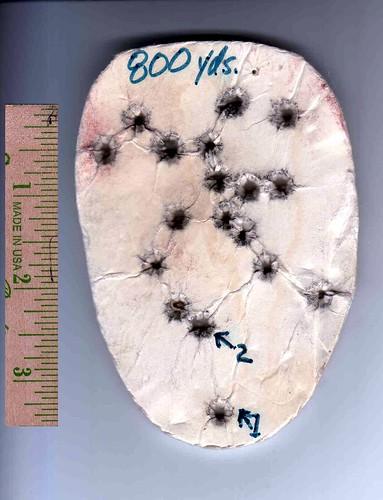Mikecr
Well-Known Member
This is ogive radius variance, and yes it does affect our measurement datums. D.ID, unless you qualified your ogives for radius first, further measurements were meaningless.All the jackets used in making a batch of bullets don't get shaped to identical dimenions in the final stage of manufacture where the front part's sized to a point
Mine do. I know because I verify every one.All the bottleneck cases headspacing on their shoulders don't have the same head-to-shoulder dimension
You'd have a hard time proving this, and end up with qualifiers to the contention, I'm sure. While lower shoulder angle cartridges might exhibit some wedging on firing, higher shoulder angle cartridges do not. My headspace holds, that is, measures same before & after, on primer firing with 223Rem, 6BR norma, 6XC, and 6.5wssm.All bottleneck cases headspacing on their shoulders have their shoulder set back a thousandth or so by firing pin impact; that changes the bullet's jump-to-rifling distance when the round fires.
You sound defeated. But I assure it is very possible to make ammo to exact dimensions, with no generalizations needed for it. I also think you'll be hard pressed to prove that doing so is a bad approach in reloading.When all these variables add up, they'll make the bullet's jump to the rifling vary a few to several thousandths.
I highly doubt the lands would produce more accurate seating than a Wilson seater plug.The only way anyone (in my opinion) will get zero spread in bullet jump distance is to use a light neck tension on bullets then seat 'em out far enough to be pushed back into the case neck when chambered and fired. Regardless of all the other tolerances in places mentioned earlier, this method eliminates all of them.
This is managed by setting headspace to exactly the same values. Nothing new there.Too bad there's no bullet seating die for rimless bottleneck cases that uses the case shoulder as a reference instead of the case head. That would remove one of the variables.
Folks, reducing variables in reloading is much of what it's about.
If you produce high runout, you can generalize it away as not mattering, or you can determine the causes & fix it.
Same with variances in headspace, seating, every sizing, capacity, charging, etc.
And while shortcut sloppy ammo may shoot well enough for you, it doesn't hurt a thing to make it as good as you can.
It helps me, because when I'm wondering about getting more from a gun, removing errant shots, lowering ES, better load development, etc, I hold a far smaller list of variables to consider.
I had a gun I thought should have shot better. It was barely 1/2moa, yet my ammo was perfect for sure & I believed my load was perfect. It had to be the gun itself. Weeks of chasing a very tough intermittent problem led to concluding that it's NF NXS scope had an internal issue. NF tested it, found a lens issue, fixed it, and the gun finally went to shooting 1/4moa solid. Without confidence in my ammo, I could have chased this one forever.
I had another gun throw shots a bit here & there. Again, I knew it was not MY ammo.
Turned out to be a slipping firing pin set screw..
So I say it's best to scratch as many variables off the list that you can -right up front.
If you believe seating is an uncontrolled variable as Bart suggests, well, at least you can get it right on the bench. This much I know.

